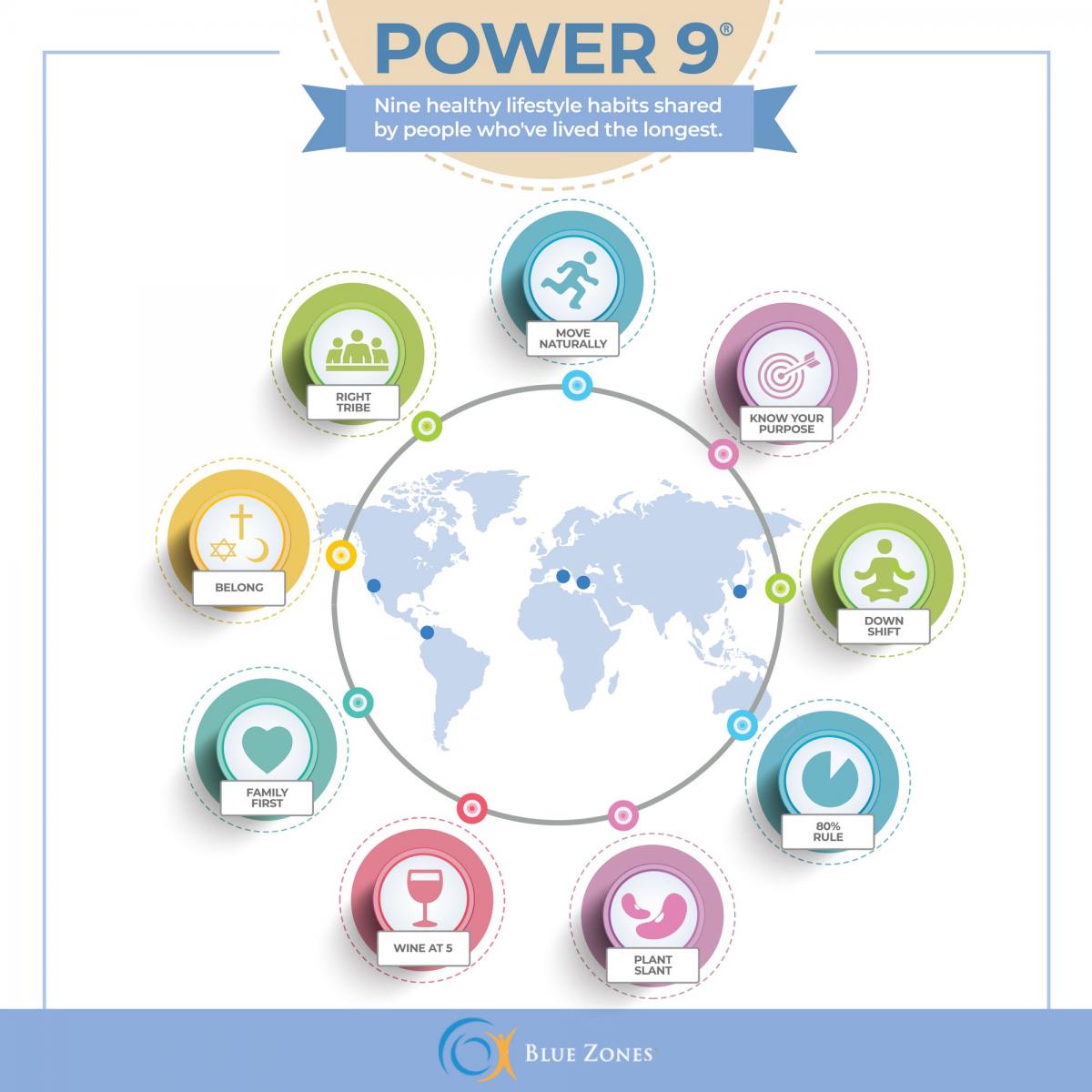What if we told you there are specific places around the globe where certain populations have found the secret of not only living longer, but living better?
Tony Buettner, Senior Vice president of the Blue Zones Project, tells the fascinating discovery of five regions around the globe holding the keys to long life and how they are helping to educate communities on how to incorporate these discoveries into daily life.
Listen to this podcast "Secrets of Centenarians Around the World" by clicking here or access it on iTunes by clicking here.
What Are Blue Zones?
Around 10 years ago, National Geographic and the National Institute of Aging approached Buettner and his team to research the longest-living populations around the world.
With leading demographers, anthropologists, medical researchers, and nutritionists, Buettner and his team identified five special regions, which they refer to as blue zones, holding the keys to long life.
The first blue zone discovered was within the Norrell province of the island of Sardinia, about 150 miles off the coast of Italy. It's here that they find the longest-lived men on Earth, who actually live 10 years longer than American men.
The second was on the island of Okinawa in Japan where women have lifespans 12 years longer than American women, with a whole population enjoying 7 more good years of life than Americans do. Also, the island has five times as many centenarians.
The third blue zone — and really the only American blue zone — is the longevity hotspot in Loma Linda, California, where a large group of people known as Seventh Day Adventists take their diet right from the Bible, focusing on greens, fruits, legumes, and nuts.
The fourth blue zone occurs in the Nicoya peninsula of Costa Rica where they have a three-time better chance of living to 90 in a good state of health.
The fifth blue zone occurs on the island of Ikaria in Greece, right off the coast of Turkey.
“It's here that almost a perfect storm of longevity factors are pushing a whole population of 8,000 thousand to an additional 8 years of life without almost no dementia or chronic disease,” Buettner said. As with the other blue zones, we find a concept of “movement, community, and friendships, and a primarily plant-based diet as the cornerstone of that blue zone.”

Source: Bluezones.com
How Can We Live a Blue Zone Life?
There are several factors that make these populations unique, but Buettner found a core set of nine conditions that seem to be in play in every blue zone.
The first is to move naturally. In blue zones, life is set up in such a way that natural movements — not necessarily lifting weights or working out in a gym — are essentially encouraged every 20 minutes or so.
Creating an environment with purpose is the next factor. This means living a life with a goal or higher calling in mind.
Next, blue zone populations have mastered the concept of down shifting. They have routines for shedding stress and avoiding the excessive inflammation that comes with it.
Those in blue zones generally practice an 80 percent rule, which means they eat only until they feel close to, but not quite, full.
Most blue zones mainly eat plant-based diets. This includes legumes, which Buettner believes are probably the most important single ingredient in a blue zone diet.
Also, most of these communities consume wine, but in moderation, and with food. They have one or maybe two drinks a day, and always with friends, family, and during mealtime. Also, red wine is the preferred drink in most of these blue zones.
Blue zones focus on community and belonging, Buettner noted. This often means having faith-based community involvement.
These populations focus on putting loved ones first, as well. Aging family members are kept in the home, families focus on monogamous partnerships, and children are supported.
The last factor is belonging to the right tribe, which means blue zone populations surround themselves with similarly long-lived people. These groups develop cultural habits that promote longer lifespans, and help curtail conditions that shorten life.
“We’re trying really to find the secret to longevity,” Buettner said. “And what we've found over and over again in each of these five populations are these nine commonalities. … Medical researchers tell us that the human body is built to live on average to a healthy age 90. … Set up your life so healthy choices are just simply the default. And when you do that within a population, you start to add an enormous amount of value and years to people's lives.”
Find out more about the Blue Zones Project or Blue Zones meal plans, by going to www.bluezones.com. To hear our full interview with Tony Buettner on Financial Sense Newshour, see Secrets of Centenarians Around the World or gain access on iTunes by clicking here.







